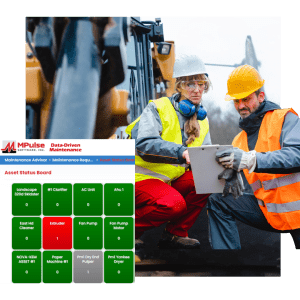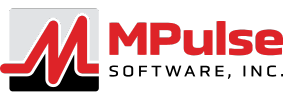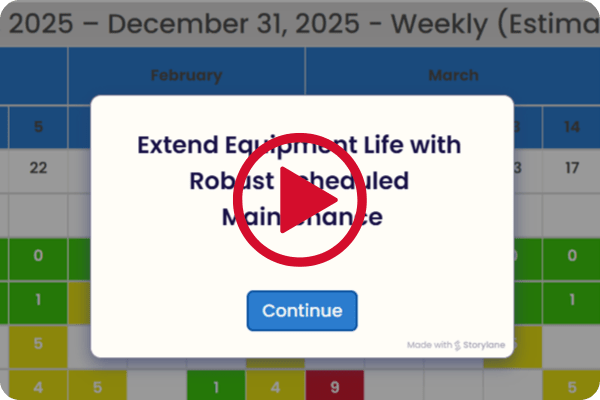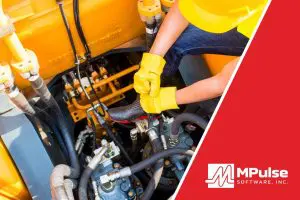Home > What is Preventive Maintenance?

Preventive Maintenance Turns Reactive Chaos into Proactive Control
Preventive Maintenance empowers teams to keep assets running smoothly by addressing issues before they happen. With real-time scheduling and automation, MPulse Software helps you create a preventive maintenance program by organizing tasks, tracking progress, and reducing risks to your operations. Start optimizing reliability today with a smarter maintenance strategy.
Table of Contents
What is Preventive Maintenance?
Preventive Maintenance (also known as Preventative Maintenance) enables maintenance teams to stay ahead of potential failures by addressing issues with physical assets before they break. This proactive approach works best when planned and scheduled using real-time data, ensuring maximum efficiency and reliability.
When implemented correctly, Preventive Maintenance reduces reliability risks, safeguarding your plant or business operations. For clarity, a physical asset refers to any tangible item requiring maintenance, from machinery and equipment to facilities and infrastructure.
With CMMS software, creating and managing a Preventive Maintenance program becomes seamless. CMMS software simplifies the process by organizing maintenance schedules, automating task tracking, and ensuring no detail is overlooked. It’s your ultimate tool for streamlining operations and optimizing asset reliability.
Preventive Maintenance starts with a PM or a Planned Work Order. A PM, short for planned maintenance, is another term for a Planned Work Order. Once your maintenance crew selects a CMMS software to manage work orders, you can decide whether your Preventive Schedule will be usage-based or time based. Think of this as routine checkups for your equipment and facilities.
Do screws loosen after a specific number of machine uses, or does it happen over a few months?
Whether you use timed or metered preventive maintenance scheduling, MPulse Software can help you reduce emergency maintenance issues and unexpected production stoppages.
Preventive Maintenance Categories
Time-Based Maintenance
Implementing a preventive maintenance program helps minimize downtime and ensures equipment reliability. One of the simplest approaches is time-based maintenance, also known as calendar-based maintenance. This method involves scheduling tasks like inspections, lubrication, or cleaning at regular intervals, based on a predefined time frame. By adhering to this schedule, organizations can proactively address potential issues before they lead to costly breakdowns.
Usage-Based Maintenance
This approach emphasizes asset usage rather than adhering to a fixed schedule, making it a valuable component of a preventive maintenance strategy. For example, maintenance is scheduled for a machine after it completes a specific number of cycles, ensuring timely care based on actual usage. Understanding your processing time is crucial in this methodology, as it helps minimize downtime while maximizing equipment efficiency.
Predictive Maintenance (PdM)
Here’s where technology truly shines. Predictive maintenance leverages advanced tools and techniques to monitor equipment and perform maintenance only when it’s actually needed. This approach saves time, minimizes downtime, and enhances operational efficiency—a win-win! Predictive maintenance factors in lead time, processing time, latency, and performance testing, utilizing cutting-edge technology integrated with compatible CMMS software. To maximize its benefits, ensure your CMMS software is fully compatible with the predictive maintenance tools you’re using.
RxM Powered by AI
Think of this as maintenance with a crystal ball. By incorporating AI, machine learning, and advanced analytics, this approach enhances your preventive maintenance program by predicting when equipment will need attention, suggesting solutions, creating work orders, and streamlining the entire maintenance process. You might initially think, ‘That sounds expensive,’ but while costs can vary, this method often leads to significant savings by reducing downtime and preventing costly breakdowns—especially if it aligns well with your maintenance strategy.
This approach aligns more closely with the actual condition of the equipment, making it an integral part of a robust preventive maintenance program. It’s ideal for identifying potential problems early and addressing them before they escalate into costly downtime for staff or equipment. Are your physical assets showing signs of needed repairs, such as increased noise levels or longer startup times? A preventive maintenance strategy can help you catch these issues before they become major disruptions.
Risk-Focused Maintenance
This approach combines elements of condition-based and predictive maintenance, making it a vital component of a comprehensive preventive maintenance program. By focusing on the criticality of assets, it ensures that high-risk equipment receives the extra attention it needs to minimize the likelihood of major failures. This proactive strategy prioritizes resources where they’re needed most, addressing potential risks before they escalate. With a preventive maintenance program tailored to emphasize critical assets, organizations can enhance reliability, extend equipment lifespan, and reduce unplanned downtime.
Learn about CMMS Software that can lower costs for manufacturers.
Benefits of Implementing a Preventive Maintenance Program
Now that the question “What is Preventive Maintenance?” has been answered, explore how implementing a preventive maintenance program supported by our software, can help you:
Simplify Maintenance
MPulse Software streamlines maintenance operations by automating reminders, generating schedules, enforcing completion, and providing a centralized platform for tracking and managing preventive maintenance tasks.
Proactive Approach
Shift from reactive to preventive maintenance, allowing you to address issues before they become critical and impact your operations.
Increase Efficiency
By reducing unplanned downtime and optimizing asset performance, you can increase productivity and operational efficiency.
Data-Driven Decisions
Gain insights into asset performance, maintenance history, and trends through comprehensive reporting and analytics. Make informed decisions to improve maintenance strategies and resource allocation.
Scalable Solution
MPulse Software is scalable and adaptable, whether you have a small maintenance team or a large enterprise. You can customize the software to fit your unique requirements and grow with your business.
Creating a Preventive Maintenance Schedule
When implementing preventive measures, start by creating a preventive maintenance program, which begins with establishing a preventive maintenance schedule. Managing tasks, schedules, and processes can feel overwhelming, but the right CMMS software can make a significant difference. Choose software that integrates seamlessly with your preventive maintenance schedule.
Frequently Asked Questions About MPulse Software for Preventive Maintenance
Why Do I Need Preventative Maintenance?
Our preventive maintenance program ensures an automatic schedule of PM tasks, simplifying adherence to manufacturer guidelines. These schedules and inspections help spot issues before they occur, minimizing costly disruptions. Maintenance intervals can be set based on time, operating hours, or part condition—triggering work orders just before inefficiencies or failures arise.
The program also ensures equipment is properly calibrated, lubricated, and maintained at the right time. Properly cared-for assets perform more efficiently, consume less energy, and fail less often—significantly extending their usable life. By establishing and consistently performing preventive maintenance procedures, organizations can avoid serious problems caused by neglect and delay the need for costly repairs or replacements.
Learn how you can ensure your success with preventive maintenance software.
What Preventive Maintenence features are available in MPulse?
These eight features should be available in preventive maintenance software…
- Asset Records store details about equipment, buildings, vehicles, or other assets—asset name, purchase date, purchase price, serial number, location, and other important details.
- Employee Records store information about your employees—names, contact information, certifications, etc.
- Inventory Records record details about spare parts and consumables you have on hand—type, model, serial number, manufacturer, supplier name, location name, item number, item state, unit of measure, etc.
- Work Orders link all the elements of repair and maintenance work in one place.
- Basic Inventory Management helps you keep up with the spare parts and consumables you have on hand.
- Basic Reporting tools help you create meaningful information from the data recorded for assets, employees, inventory, schedules, and work orders.
- Scheduling enables you to establish, monitor, and execute PM tasks (both time- and meter-based).
- Service Requesting is essential when you get repair requests from either internal departments or outside customers—allowing users to enter and initiate service requests, and then monitor the progress of the requests as your team completes repairs.
Read more about preventive maintenance software features.
How much does PM Scheduling and Tracking software cost?
Software prices vary significantly depending on your needs and the size of your operations. Typically, you’ll pay for the base software and then the number of licenses you need. Advanced features also will add to the cost.
The software cost is more than just the price of the software itself. When you ask for a software quote, plan to include…
- Startup training
- Integration services
- Data migration from legacy systems
- Hosting
- Maintenance/support agreements
Calculate the five-year total cost of ownership of all these things to get an accurate comparison.
These price range estimates will tell you if their product is a good fit.
What’s the difference between Preventive Maintenance vs. Predictive Maintenance?
Preventive maintenance is triggered by time, meter, or event. This type of maintenance is based on average or expected life statistics (usually determined by the equipment manufacturer or vendor). The most common example is changing the oil in a car every X,000 miles or every X months.
Preventive maintenance is one of the first steps to reduce run-to-failure maintenance in favor of a more proactive maintenance program. Additionally, CMMS excels at helping maintenance shops schedule preventive maintenance tasks, preventing failure and prolonging asset life cycles.
Predictive maintenance means different things to different people. Usually, maintenance professionals define it as gathering data on the actual condition of equipment to determine when maintenance is needed—sometimes called condition-based maintenance (CBM). CBM allows you to track meters and gauges on assets, and to trigger work orders at specific points. You can gather the data manually or automatically, and your CMMS software stores the data and alerts maintenance staff to take action.
For example, condition-monitoring tools and CMMS software can analyze how the asset is working—maybe by measuring operating temperature or oil viscosity, etc. This data helps spot signs of potential problems. Then CMMS software sends alerts before breakdowns occur.
Discover how simple predictive maintenance can boost PM effectiveness.
What’s the difference between Timed vs. Metered Preventive Maintenance with CMMS Software?
Timed preventive maintenance is simply based on the time between PM tasks—such as days, weeks, months, etc. A good example is inspections, which need to be performed at specific time intervals to help maintenance teams spot issues before they occur.
Metered PM scheduling measures usage using a specific meter, which triggers a PM task at the appropriate time. Meter readings track and measure the condition of equipment, machinery, vehicles, and other assets—such as mileage, usage time, production volume, pressure, flow rate, etc.
Over time these meter readings create historical data for the asset, which maintenance managers can use to determine if repairs were successful or if they should adjust the PM schedule based on performance.
Learn how to automate meter readings with MPulse DataLink.




